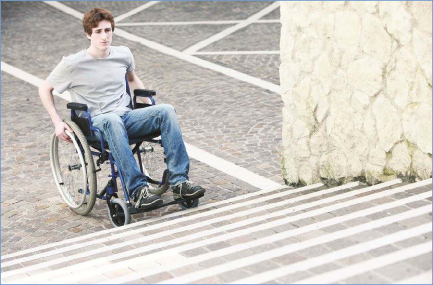< Previous | Contents | Next >

Universal Design in Learning
UDL is an educational approach based on the learning sciences with three primary principles: multiple means of representation of information, multiple means of student action and expression, and multiple means of student engagement (http://udloncampus.cast.org). The intent of Universal Design in higher education is to create an educational environment that is readily accessible and usable by as many students as possible without the need for adaptation or specialized design.
For your convenience we have included some commonly used practices in the next few pages. However, for additional guidance on how to create courses and course content in accordance with the principles of Universal Design, please consult your campus disability service professionals and additional resources listed at the end of this chapter.
In Instruction
A statement on a syllabus that invites students to meet with the instructor to discuss learning needs
Multiple delivery methods that motivate and engage all learners
A flexible curriculum that is accessible to all learners
Examples that appeal to students with a variety of characteristics with respect to race, ethnicity, gender, age, ability, disability, and interest
Regular, accessible, and effective interactions between students and the instructor
Allowing students to turn in parts of a large project for feedback before the final project is due
Class outlines and notes on an accessible website
Assessing student learning using multiple methods
Awareness of processes and resources for disability-related accommodations
In Services
Service counters that are at heights accessible from both a seated and standing position
Staff who are aware of resources and procedures for providing disability-related accommodations
Pictures in publications and on websites that include students with diverse characteristics with respect to race, age, gender, and disability
A statement in publications about how to request special assistance, such as a disability-related accommodation
A student service website that adheres to accessibility standards, and printed materials that are easy to reach from a variety of heights and without furniture blocking access
Printed publications that are available in alternate formats (e.g., electronic, large print, Braille)
In Information Technology
Captioned videos
Alternative text for graphic images on web pages so that individuals who are blind and using text-to-speech technology can access the content
Procurement policies and procedures that promote the purchase of accessible products
Adherence to standards for the accessible and usable design of websites
Comfortable access to computers for both left- and right-handed students
Software that is compatible with assistive technology
Computers that are on adjustable-height tables
In Physical Spaces
Clear directional signs that have large, high-contrast print
Restrooms, classrooms, and other facilities that are physically accessible to individuals who use wheelchairs or walkers
Furniture and fixtures in classrooms that are adjustable in height and allow arrangements for different learning activities and student groupings
Emergency instructions that are clear and visible and address the needs of individuals with sensory and mobility impairments
Non-slip walking surfaces
Our Sources and Additional Resources:
The Center for Universal Design in Education: publications, videos, and web resources:
http://www.uw.edu/doit/CUDE.
UDL On Campus:
http://udloncampus.cast.org
http://www.washington.edu/doit/Brochures/Academics/
http://www.ncsu.edu/ncsu/design/cud/about_ud/about_ud.htm
< Previous | Contents | Next >

